pedestrian
Latest

This robotic backpack follows its leader wherever you may wander
Boston's Piaggio Fast Forward is set to release in October a smaller, more nimble iteration of its pedestrian-tracking cargo hauler robot, dubbed the Gitamni.
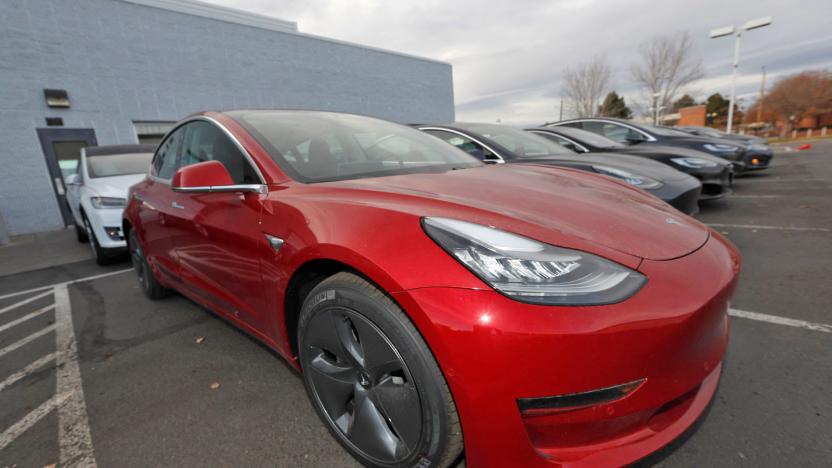
Tesla cars will soon talk to pedestrians
If you're a Tesla owner, you might not have to open a window to let your intentions be known to passers-by. Elon Musk has teased plans to let Tesla cars "talk" to pedestrians through external speakers (presumably the ones added to comply with sound requirements in the EU and US). He didn't outline how it would work, but the feature appears to at least support canned clips -- Musk even hinted that you'll get to "fart in their general direction" Monty Python-style.
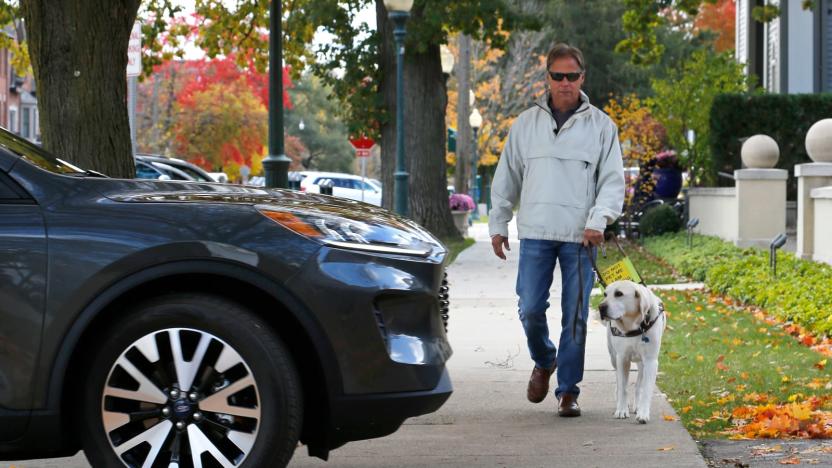
This 'O-29' hum is the sound of Ford's new hybrid SUVs
Add Ford to the ranks of automakers adding sounds to notify pedestrians of oncoming electrified cars. The 2020 Escape Hybrid and Explorer Hybrid will both include a custom sound, O-29 (listen to it below) that plays when they're moving at speeds up to 19MPH. We wouldn't quite call it "melodious" like Ford does, but it's designed to be at once identifiable as a car sound yet gentle on the ears. The humming both modulates and changes frequencies to match speed, giving you enough cues to react without completely eliminating the usual hybrid quietness.

Lexus makes camera and radar safety features standard for 2020 cars
You'd think that luxury automakers would load their cars with safety tech by default, but that's not always the case -- it hasn't been for Lexus, anyway. However, the company is making amends for that shortfall. It's making its Safety System+ a standard feature for all its vehicles, starting with the 2020 model year. These camera- and radar-based features aren't particularly new, but some of them have been reserved as options (or for higher-end models) until now.
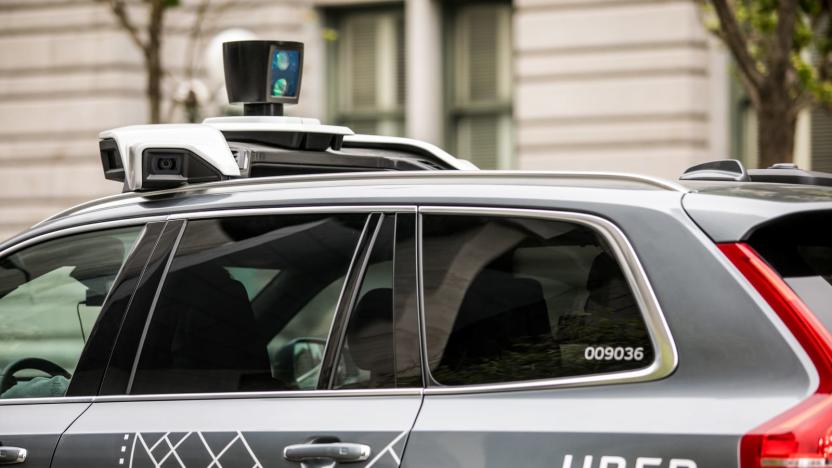
Uber reportedly reduced the number of sensors on its autonomous cars
Uber is facing some intense scrutiny after one of its self-driving cars struck and killed a pedestrian in Arizona ten days ago. The company (along with it's partner, NVIDIA) has stopped testing its autonomous vehicle in cities across the US, and the Arizona governor suspended the tests specifically in that state. According to a report by Reuters, Uber allegedly scaled back on the number of safety sensors used to detect objects in the road, resulting in a blind zone on the Volvo SUV model involved in the accident.
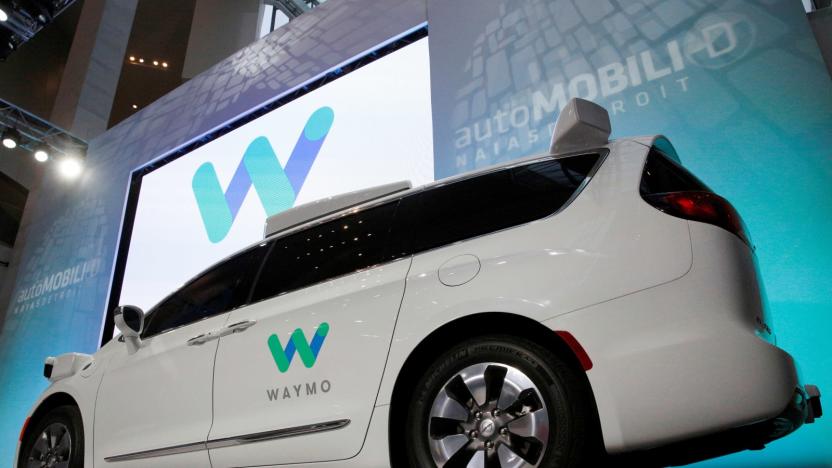
Waymo patents cars that soften to safeguard pedestrians
Self-driving cars are supposed to be safer by nature, as they shouldn't make nearly as many driving errors as humans. However, Waymo might not be willing to take any chances. The Alphabet-owned company recently received a patent for technology that would soften a car's body in the event of a collision with a pedestrian. The feature would change the rigidity of body panels, bumpers and the hood using underlying cables, rods or springs. The moment sensors detect an imminent pedestrian impact, the car would loosen those underpinnings and create a relatively gentle surface that reduces injuries.
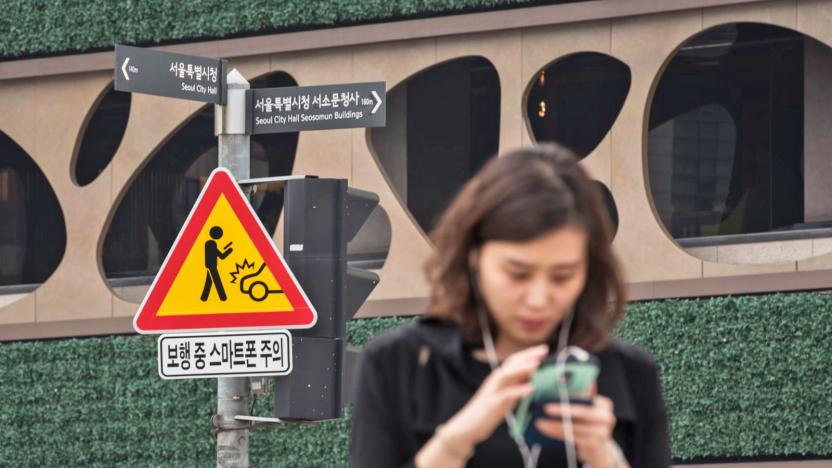
South Korea hopes traffic signs will cut phone distractions
Cities have tried a number of exotic solutions to get phone-toting pedestrians to focus on where they're going (or at least, out of the way). However, Seoul thinks there's a simpler answer: traffic signs. The South Korean capital is testing signs that warn smartphone owners in five accident-prone areas (such as City Hall or Gangnam Station) about the perils of distracted walking. In theory, those periodic reminders will have you looking up more often and spare you from smacking into a car.
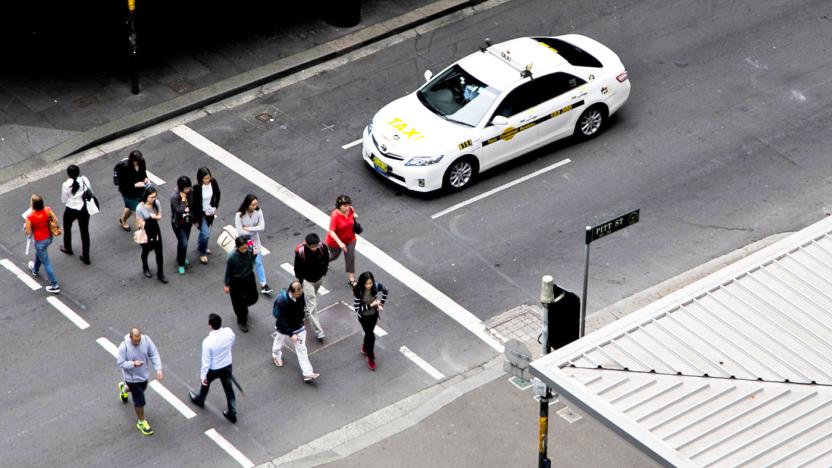
Australia puts traffic lights in the ground to alert phone addicts
The German city of Augsburg has already tried putting traffic lights in the ground to keep cellphone-obsessed pedestrians from walking on to train tracks, but the Australian state of New South Wales wants to take things one step further. It tells Mashable that it's going to install ground-based traffic lights at key crosswalks in Sydney (likely in its central business district) as part of a trial starting in December. The aim, unsurprisingly, is to prevent an unpleasant encounter with a car while you're busy texting your friends.

ICYMI: Robot news round-up, 3D hand scanner and more
#fivemin-widget-blogsmith-image-439685{display:none;} .cke_show_borders #fivemin-widget-blogsmith-image-439685, #postcontentcontainer #fivemin-widget-blogsmith-image-439685{width:570px;display:block;} try{document.getElementById("fivemin-widget-blogsmith-image-439685").style.display="none";}catch(e){}Today on In Case You Missed It: iRobot sold its line of military robots to a US-based firm to focus on Roomba and a new chameleon robot changes color to blend in; a student built a 3D scanner with cameras and Raspberry Pi that is much cheaper than any other scanner; and a new pedestrian detection software from the University of California, San Diego, is nearly as fast as the human brain.
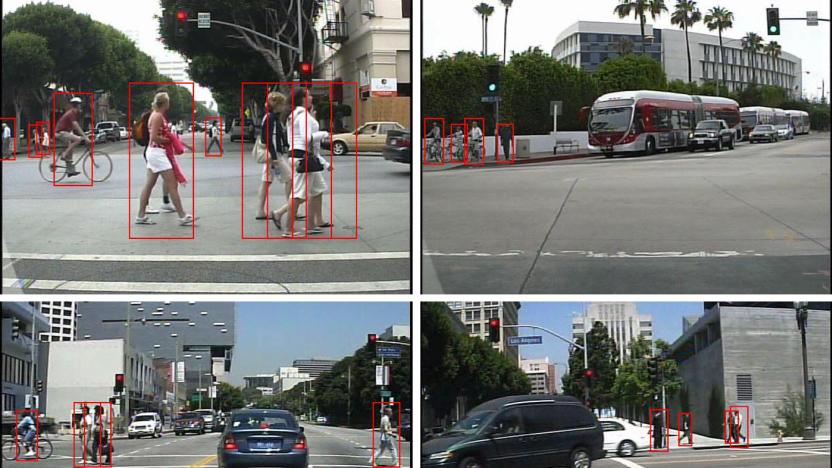
Smart car algorithm sees pedestrians as well as you can
It's one thing for computers to spot people in relatively tame academic situations, but it's another when they're on the road -- you need your car to spot that jaywalker in time to avoid a collision. Thankfully, UC San Diego researchers have made that more realistic than ever. They've crafted a pedestrian detection algorithm that's much quicker and more accurate than existing systems. It can spot people at a rate of 2-4 frames per second, or roughly as well as humans can, while making half as many mistakes as existing systems. That could make the difference between a graceful stop and sudden, scary braking.

Fist-bumping a button is the best way to cross the street
Tired of having to tap (or, let's be honest, mash) a boring old button to cross the street? Los Angeles artist Alfredo Adán certainly is. He recently created Walkbump, a project that covers crosswalk buttons with casts of a fist -- as you'd guess by the name, you have to fist-bump the button to signal your intentions. It's a "simple" hack (even if the construction process isn't), but it does add a friendly flair to your trip across the road. You're not so much telling the traffic light to change as asking it nicely. While this isn't as clever as some crosswalks, such as one that plays Pong, it does bring some much-needed humanity to the urban landscape.

Taiwan considers fines for smartphone-addicted pedestrians
Taiwan is considering ticketing people who cross the street paying more attention to their iPhone than the cars around them. No, seriously. Taiwan currently has over 14 million mobile internet users, many of whom lawmakers consider "addicted" to their phones. The hope is a fine would curb that addiction (quite literally), and cut down on pedestrian deaths. According to the government, Taiwanese drivers often don't yield to pedestrians (even when they have the right-of-way). The "chaotic traffic" is already a dicey situation for those on foot. When you add a phone into the mix, your chances of survival get even worse. Distracted walking infractions would only apply to people in roads (walking off a pier while checking Facebook is a-ok), and would cost just $10 a piece. If the chance of being flattened by a motor scooter isn't enough for you to pause Angry Birds, our guess is a small fine won't do the trick either.

EU to require that EVs and hybrids make noise to alert pedestrians
The EU has been talking for years about requiring pedestrian alert noises on electric cars and hybrids, and some vehicles already do. In the future, however, those warning systems will be mandatory. The European Parliament has backed a proposal that would require sound-making hardware in new electric vehicles by July 2019. The European Commission would lock down the final rules by July 2017. Whether or not you're a fan of the potential regulation, gas-powered vehicles aren't being let off the hook. Parliament also wants to start lowering conventional engine noise levels as soon as July 2016, so every Europe-friendly automaker will have to be mindful of audio before too long. [Image credit: Harry_NL, Flickr]
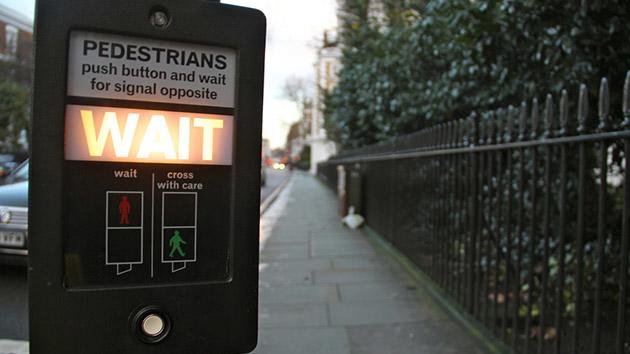
London will test smart crossing system to keep pedestrians safe
Sure, pedestrian detection tech for cars is already in the works, but the city of London wants to keep people even safer by equipping its crossings with a bunch of sensors and devices. London Mayor Boris Johnson just announced that the city will try out a smart crossing system, which he claims has never been tested anywhere in the world before. It uses cameras mounted on traffic lights to detect if pedestrians are piling up, and it automatically adjusts signals to give large crowds longer time to cross the road. In the future, the reverse might also be true: the city's transportation agency plans to tweak it so that lights change more quickly when everyone's safely on the other side.

Volvo revamps its pedestrian detection system to automatically brake for cyclists (video)
Cars that automatically stop when a pedestrian is in the way have been in Volvo's fleet for a while now, but the automaker has just unveiled an update to its existing tech that'll stomp on the brakes when cyclists are too close for comfort. Announced at this year's Geneva Motor Show, the revamped system detects how close objects are with a grille-mounted radar and then uses a high-def camera within an auto's rear-view mirror to discern whether it's barreling down on a pedestrian or a biker. When bicyclists swerve in front of an automobile heading in the same direction, the setup immediately alerts the driver and applies full brake power -- a world's first Volvo says. According to the Swedish manufacturer, all vehicles outfitted with the pedestrian detection will have the cyclist spotting technology baked in, and it'll show up in mid-May within the new Volvo V40, S60, V60, XC60, V70, XC70 and S80. Head past the break for a video of the feature in action.

GM testing pedestrian detection system powered by WiFi Direct (video)
Car makers have been peddling wireless pedestrian avoidance systems almost as long as there have been automobiles. (We believe one of the earliest was called the "side view mirror.") GM's new experiment though, differs from other implementations by skipping out on the 3G, cameras and radar -- instead going for a model built around WiFi Direct. The peer-to-peer 802.11 standard hasn't exactly set the world on fire, but the WiFi Alliance is diligently tweaking the platform and apparently GM thinks its a perfect match for connecting cars, cyclists and pedestrians to each other. Unlike 3G-based systems, there's little lag between locating and identifying bikes or people crossing the street since the signal doesn't have to be bounced off a satellite. It also has a leg up on radar detection since WiFi can be a two way pipeline -- alerting someone out for a stroll of an oncoming vehicle. Of course, it will be some time before anything like this actually makes it into a production vehicle. But, in the meantime, you can check out the PR and video after the break.

Panasonic details radar-based technology that can detect collisions in low light
Collision detection for cars? Yeah, scientists are on that. But whenever we read about concepts like this, the accompanying literature is often curiously light on details pertaining to real-life driving conditions; it's often unclear how well the tech will fare if you dredge it up on a foggy day, or in the middle of torrential storm. But in that press release you see down there, low visibility and poorly lit roads are all Panasonic wants to talk about. The company just unveiled its new crash-avoidance system, which, like other concepts we've seen, uses millimeter-wave radar technology to detect pedestrians and bicyclists. Since humans tend to reflect weaker radar signals than cars, Panasonic has designed a new pulse radar code sequence that allows pedestrians to leave a bigger footprint. It's so effective, the company claims, that it can detect bystanders up to 40 meters (131 feet) away, and will work at night and through rain, fog, snow and blinding sunlight. That all sounds promising, of course, but as with other concepts, it's not clear, when, exactly we'll see this system put to good use in the real world.

Student's push to make Raleigh more walkable relies on homemade signs and QR codes
Walking is apparently underrated. So University of North Carolina at Chapel Hill student Matt Tomasulo decided to engage in some "guerilla urbanism" in January with fellow fans of bipedal activity, posting 27 signs at three Raleigh, NC intersections as part of the "Walk Raleigh" project. The cardboard and vinyl signs contained snippets about how many minutes it would take to walk to must-see destinations like Raleigh City Cemetery, as well as QR codes for downloading directions. Like the activity it promotes, Tomasulo says the idea behind the project is simple: It's OK to walk. Apparently, Tomasulo and his buddies did such a great job with the signs that it took the sharp folks at the city government a month to catch on and take the stuff down. The city has since walked back its opposition to the signs, however, and put them back up as part of a 90-day pilot project. In the meantime, Walk Raleigh has turned into a Walk [Your City] Kickstarter campaign to put your wallet where your feet are.

Toyota demos Prius' proximity notification system, touts 'futuristic' purr (video)
Silence may be a virtue under most circumstances, but not when you're driving around a leafy, residential neighborhood in your Toyota Prius. That's why the manufacturer came out with its very own vehicle proximity notification system last year -- a "futuristic," underhood noisemaker designed to alert pedestrians and the visually impaired to the plug-in's presence. Now, Toyota has offered more details on its safety system, in a freshly released demo video starring the 2012 Prius V. The car's artificial engine noise, as the company explains, only kicks in at speeds below 15 miles per hour, allowing it to broadcast its audible heads-up across parking lots or other low-speed zones. The sound itself, meanwhile, emanates from external speakers and consists of a blend of high and low frequencies that won't be by muffled by background noise or physical obstacles. The vehicle's pitch shift technology also enables the tone to rise in pitch as the car speeds up and to fall as it slows down, giving others an idea of how fast it's approaching. Accelerate past the break to see the full video for yourself, while John Kerry nods in silent approval.

Vection Field controls traffic at SIGGRAPH, fictional cities from the future (video)
So, let's set the stage. You're walking down a semi-busy street in a semi-foreign city. You're curiously hanging close to the middle of the sidewalk. You bust out your smartphone and figure out that your so-called engagement just got "Complicated." Your gait has an irregularity. You look up and spot what appears to be a local, eerily perturbed and somewhat flummoxed by your current position. You dodge left. So does he. You dodge right, knowing full well that it'll only complicate matters when he follows suit. Before long, you're tiptoeing around a stranger while a full-on traffic jam builds up behind you. You've just ruined the universe, and that's not doing anyone any good. The solution? The University of Electro-Communications's Vection Field, which hones in on large moving visual cues that "induce a sense of self-movement." Funny enough, the lenticular lenses pathway here at SIGGRAPH actually worked -- we never expected an optical illusion to solve such a monumental issue, but we'll take it. Vid's past the break, per usual.











